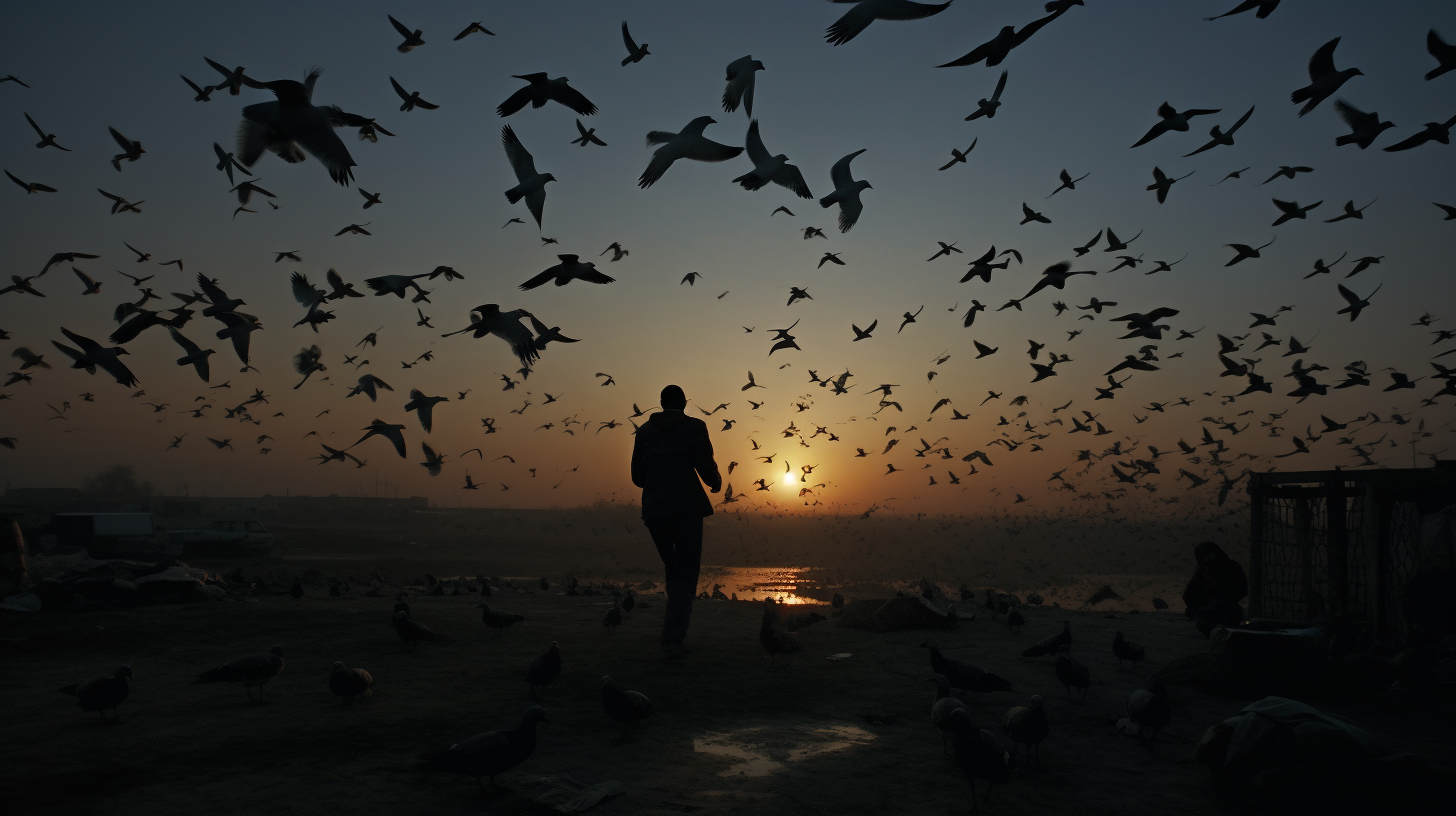As dusk envelops the skies with a melancholic blue, the silhouettes of our erstwhile feathered companions etch themselves onto the canvas one final time. The migratory birds, once the harbingers of seasons and the tireless voyagers between continents, now emerge as the tragic protagonists in the final act of their ancestral journey. This bittersweet spectacle unravels in a world that echoes the silence of a disintegrating biosphere.
Their odyssey, once a testimony to the resilience of life, has turned into a grueling marathon against the backdrop of fading biodiversity. Climate change, habitat destruction, pollution — these are the relentless antagonists in this somber narrative. The flocks grow thinner each year, their numbers dwindling much like the hope they once inspired. ‘The songs of the skies are going quiet’, murmurs an old ornithologist, spotlighting the devastating extent of this unraveling catastrophe.
In harmony with the vestiges of nature’s symphony, the migratory birds take their leave, not as the majestic procession of the past, but as ephemeral wisps amongst the gusts. Their departure is not just a geographical one; it is an exodus from the world’s stage, a dire forewarning of the ecological dearth that looms over our own existence.
Within the barren fields and desolate forests, the absence of avian life becomes starker. This absence permeates the air with an unsettling stillness, a reminder of the ‘Faded Rainbows’ we once beheld. Our sky dancers that painted the heavens with their vibrant plumage are no more, leaving behind a monochromatic landscape, devoid of the ballet that once enchanted observers and nurtured souls.
And yet, as the end approaches, a fleeting sense of wonder persists at the resilience these creatures displayed. With a piercing clarity, one can grasp the intrinsic link between their destiny and ours — a kinship wrought through the very essence of environmental interconnection. ‘In their absence, we confront our own reflection’, whispers the wind, a harbinger of truths too poignant to ignore.
As scholars and poets alike mourn the loss of nature’s minstrels, researchers conduct their solemn vigil, documenting the dwindling numbers. Each statistic is not merely data; it is an epitaph for a species, indelible proof of a paradise dissolved. It is a solemn reminder that, while migratory patterns wax and wane, the trajectory of our ecological narrative has been irrevocably altered.
In the final analysis, we become witnesses and chroniclers of a grand exodus. No future ballads will be sung about the aerial escapades of the swifts and swallows. No more tales of the legendary migrations that enthralled generations — only the stark legacy of silence they leave in their wake.
As we stand at the precipice, bearing witness to the ultimate departure of our avian emblems, it seems the time for action is extinguished. Now, all that remains is the act of concession to the unfolding tragedy that we have authored, a punctuation mark at the end of an age-old sentence.
